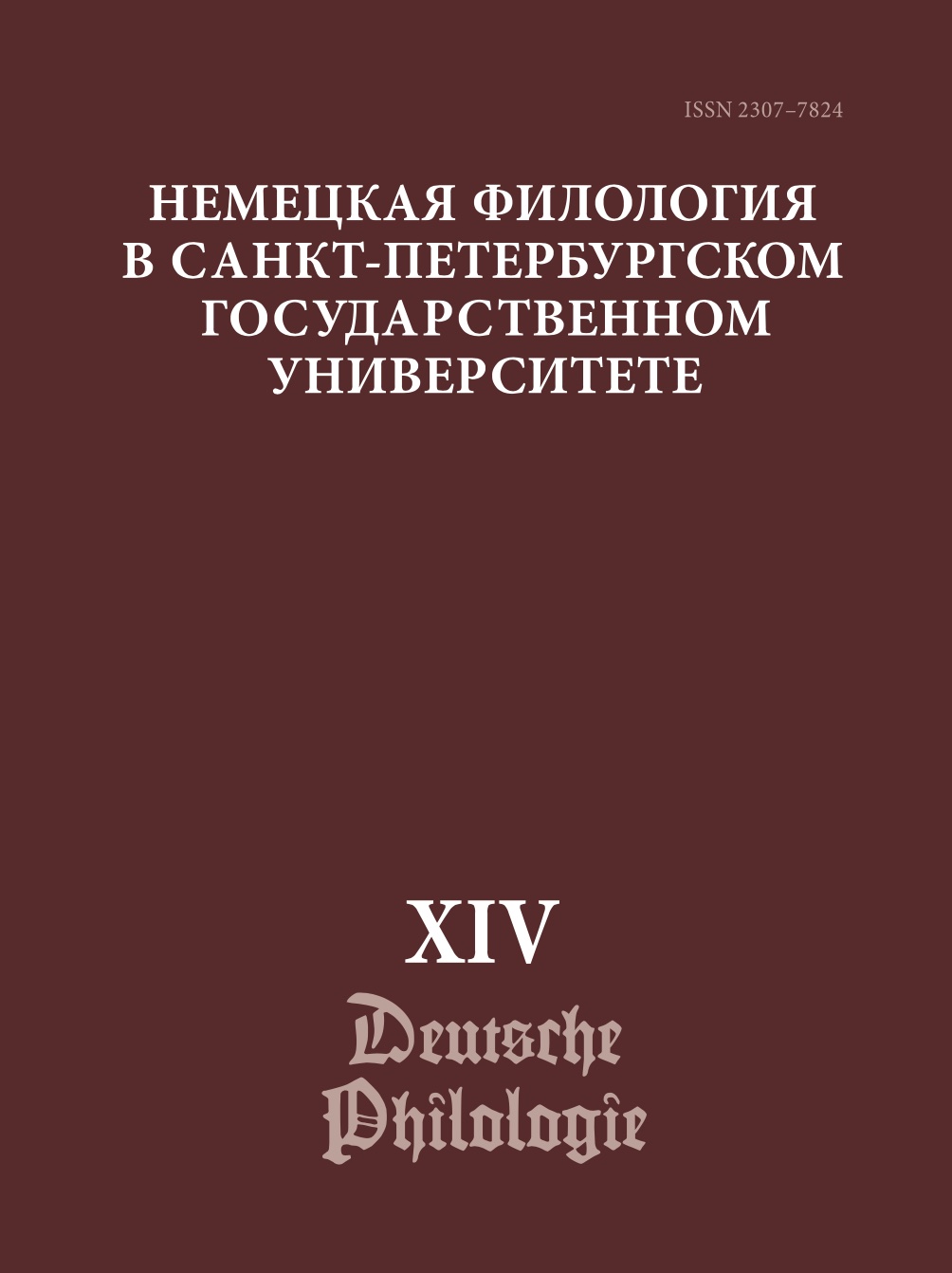IN, BEI ODER AUF YOUTUBE? CORPUS STUDY OF COMBINABILITY OF WEB SERVICES NAMES WITH PREPOSITIONS
DOI:
https://doi.org/10.21638/spbu33.2024.125Abstract
In the focus of the article are statements with specific proper names — names of social networks, search engines, video hosting sites on the Internet (YouTube, Telegram, etc.). Empirical observations of the speech of native speakers of German and students learning German as a first or second foreign language allow us to establish the variability of the use of prepositions with the names of virtual resources. While research practice lacks quantitative data essential for the identification of main ways of such variation, didactic practice needs precise grammatical rules concerning the use of certain prepositions with the above-mentioned proper names. The said above determines the relevance of our research, the aim of which is to establish trends in the use of prepositions with the names of web platforms, to identify the most frequent options, to explain what directs the variation in each case. Data from the DWDS corpus collection (Webkorpus) for 2013–2023 were used as the material of the study. The quantitative-qualitative analysis, which includes methods of corpus-based analysis, contextual-semantic analysis, structural-grammatical analysis, and frequency analysis, allows us to partially confirm our initial assumption about the predominant use of local prepositions (in full accordance with the concept of the Internet environment as a “third place”). Some patterns of variation within this class of prepositions allow not only to include the results of the study in actual learning materials, but also create the ground for further comparative study of the combinability of prepositions with the names of popular Internet resources.
Keywords:
German online communication, metacommunicative utterances, combinability of proper names, German prepositions, corpus-based analysis
Downloads
References
Литература
References
Downloads
Published
How to Cite
Issue
Section
License
Условия передачи авторских прав на статьи и рецензии, опубликованные в ежегодном периодическом издании «Немецкая филология» регулируются условиями Лицензионного Договора автора с Санкт-Петербургским государственным университетом. В соответствии с Лицензионным Договором опубликованные материалы находятся в открытом доступе, а авторам бесплатно предоставляется неограниченные возможности их распространения и самостоятельного архивирования.




